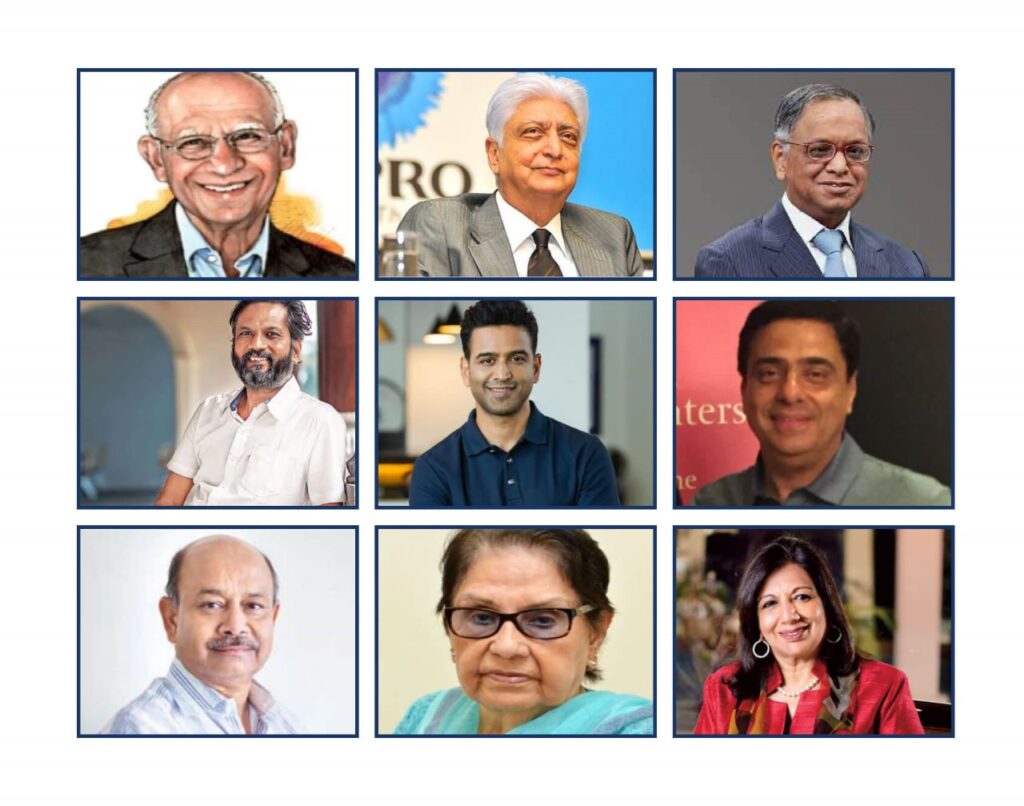At GYR Capital Advisors, my team and I meet a lot of entrepreneurs, SME business owners, and the management of companies who all need growth capital in the form of IPOs, Debt financing, Rights Issues, and Warrants & through Private Equity.
When we have discussions with them, 80% are optimistic, passionate about their business, and bullish about the Indian growth story.
And that is good for them and us, and in some companies we believe that this could become the next billion-dollar company and the following multi-bagger stock story.
Is it enough?
But some promoters and entrepreneurs will be satisfied when they reach a certain amount of valuation for their company.
For example, a small-scale IT company operating in a specific niche with a strong moat and has tremendous market opportunity to grow. It gets listed at a valuation of Rs.100 crores.
And after five years of good growth in revenue and net profits and due to a strong tailwind in the industry, its market capitalization is around Rs.2,000 crores without any rights issues and Follow on Public Offer (FPO), thereby not diluting its capital base.
Not everyone is a trendsetter.
And the promoter thinks that since I have a 75% stake in my company and my net worth is more than Rs.1,500 crores. It is enough for me, my family and my company. With that thinking and satisfaction in their mind, the comfort zone starts. This makes them stop chasing growth and sell this IT Company to big fish like Infosys, Wipro, HCL, etc.
This stops them from focusing on building solid moats for their business which can be trendsetters in their respective industry.
But my question was, 40 years ago, WIPRO was a Vegetable Oil Company, Infosys was a tiny IT firm, and HCL was just another computer hardware company.
Then what made these companies big fish in the IT industry, where now they have the financial strength to acquire smaller and medium IT firms and kill the cut-throat competition in their industry?
It depends on how much “fire is in his/her belly” of the guy who is running the company.
People laugh at me for the term “Fire in the Belly.”
What is FIRE IN THE BELLY which drives these entrepreneurs?
I will give you the following examples of entrepreneurs.
- Ashok Soota, Age-80 years (Happiest Mind Technologies)
- Nithin Kamath, Age-43 years (Zerodha)
- Narayana Murthy, Age- 76 years (Infosys)
- Azim Premji, Age- 77 years(WIPRO)
- Ronnie Screwvala, Age- 60 years (UTV, Unilazer Ventures, Upgrad)
- Sarla Ahuja, Age-86 years (Shahi Exports)
- R.K.Damani, Age-67 years (Avenue Supermarts)
- Sridhar Vembu, Age-55 years (Zoho)
- Kiran Mazumdar Shaw,Age-70 years (Biocon)

When you analyze and understand their entrepreneurial journey, you get to know that they have created immense wealth and impact for themselves, their shareholders, the industry, and most importantly, the society, which includes their employees and customers, the value they deliver to them.
You can bet on numbers, facts, and situations if you have researched the business and industry well.
But there is one thing in the investing world, which every super investor fails in; even the titans like Carl Icahn, Stephen Schwarzman, and also Warren Buffett fail in it.
That is the HUMAN BEING, and in the capitalist world, this species is called PROMOTER or the management running the show.
We humans always amaze ourselves by doing impossible things that other humans have set a boundary for us.
And for true Entrepreneurs, there is no early retirement moment in his/her life, he/she will push the limits and disrupt the industry and age is just a number and wealth is the by-product of it.
This truly personifies Mr.Ashok Soota,even at this age he is running his second company, and in 1999, he quit WIPRO as President and started MindTree with Subroto Bagchi and this also shows that great organizations create leaders and next-gen entrepreneurs.

(Pic Disc-Ashok Soota’s (in blue T-shirt) stint at WIPRO as President and Azim Premji on the extreme left)

(Pic Disc.-Ashok Soota & other MindTree official at company’s AGM with V.G.Siddhartha)
Why couldn’t most Indian entrepreneurs and start-ups fail in India?
The successful business owners focus on value:
Value Creation, most Indian entrepreneurs and promoters are focused on short-term growth, not on long-term value-creation for their stakeholders (employees, suppliers, nation, and most importantly, customers).
Let me help you to understand the Value-Creation concept with some examples:-
| Company | Value to Customer |
| Zerodha | Affordable & Friction-less Broking service to Indian Retail Investor |
| Avenue Supermarts | Daily Discounts on Food & Grocery |
| Infosys | Giving affordable IT service to clients abroad at 1/10th of the cost |
| Shahi exports | Low-cost apparel contract manufacturer to Global fashion brands like Gap, H&M & Target, etc. |
| Zoho | Build smart technology to help businesses work better, mostly for SMEs in India & abroad. |

The story of Reliance:
Who would have thought that 65 years ago, a petrol pump attendant could build a conglomerate that is now an integral part of every Indian’s life, Reliance Industries Limited?

Late Dhirubhai Ambani would say that we have to change orbits and not be satisfied with the rotation one was in.
Enam Holding’s Manish Chokhani mentioned in a CNBC interview, “In a nation’s history, sometimes you get a Rockefeller, sometimes you get JP Morgan. We have been fortunate to combine all this in one entity called Reliance, where they’ve constantly changed orbits and gone to newer and newer things.”
Reliance continuously operated on first principles, drilling down to the lowest atom or unit of production. Imagine if they didn’t have that total control over technology. They wouldn’t have been able to make many of the items that come out at the top of the refining barrel.
Dhirubhai would have been happy with his Vimal clothing brand and the polyester trading business operating in the MSME sector. But deep down inside, he had the “Fire in the belly” to explore more and disrupt the Indian economy.


He did the most incredible service to the nation. If India didn’t have Reliance Refinery, we would not be growing the way we are currently, especially with what’s happening in the geopolitical arena.
Think of COVID without Jio, which provided the bandwidth the whole country ran on.
The hype:
There are other promoters and entrepreneurs whom I admire a lot, and I want to be part of the next set of entrepreneurs who will fuel India’s growth story.
Nowadays, I see most new-age business entrepreneurs are concerned about their company’s valuation to fund their venture with free money and pitch the funding round to investors with Amazon’s example of three financial year loss in their initial days
Amazon was concerned about customer satisfaction and how they could add value to their end-user and in their initial years,they invested heavily in their business to serve the customer and build other avenues of growth and revenue.
The booming MSME sector:
The Micro, Small, and Medium enterprises (MSME) sector has emerged as a vital sector of the Indian economy, and the total contribution of MSMEs to the GDP is 33%.
33%, that’s a massive contribution to a nation’s economy and employment generation, so think of the quantum of wealth it will generate for the Indian investor community if 10% of these SMEs get listed and get the necessary capital from Indian Capital Markets.
Src:Trade Promotion Council of India
As a Merchant Bank, we make sure that we foster and assist this SME ecosystem through efficient and effective capital raising and other value-enhancing services.
We always do our due diligence in terms of analyzing the business, and compliance and giving the correct value on the table, be it our client for whom we are raising the capital or the investors who are investing in the company, be it an institutional investor or a retail investor.
And most important, the regulator SEBI and exchanges to whom we are accountable.
Are things really different today?
Nowadays, new-age entrepreneurs complain in the media forum that doing business in India and raising capital is very difficult.
But it’s the opposite, I believe, and in the last 2-3 years, I have seen a huge capital inflow into SME companies through IPOs. Plus, the view on SME companies has changed among retail and institutional investors.
My team and I are always bullish and optimistic about India’s growth story path toward a US$10 trillion economy, not US$5 trillion.
And this journey could only be accomplished and fuelled by entrepreneurship backed by the right intent, capital-frugality, technology, and targeting the right consumer segment.
Warm Regards,
Nikhil S.John
Research Analyst

